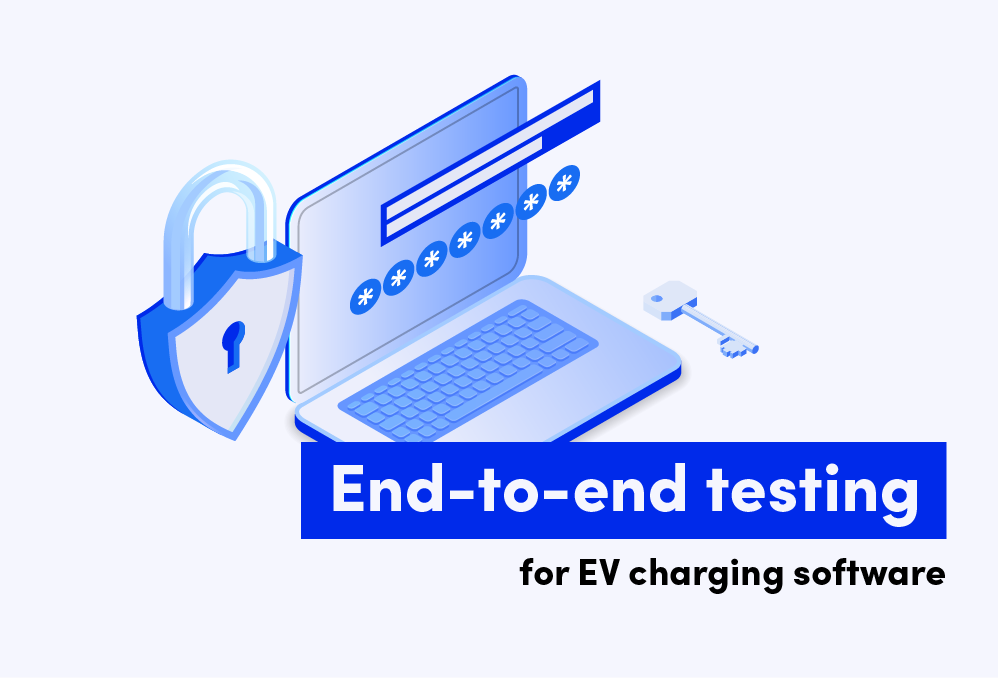In our recent article, we have touched upon the topic of penetration testing - a crucial procedure in ensuring the cybersecurity aspects behind software solutions. We’re now continuing the testing saga by bringing closer another software examining type.
Integration & e2e testing: what are they?
Integration and end-to-end (E2E) testing are critical proceedings of the software development lifecycle, essential for ensuring that different parts of a system work together seamlessly and the system as a whole operates as intended. These testing methodologies stand out for their ability to detect issues that unit tests might overlook, providing a holistic view of the system's performance and functionality.
Integration testing focuses on the interactions between different modules or services in a system, ensuring that they communicate and function together correctly. This type of testing is crucial because it helps to identify problems in the interactions between integrated components or systems that might not be apparent when these components are tested in isolation.
End-to-end testing takes a broader approach, encompassing the entire application and its environment. This testing method simulates real-world scenarios, checking not only the application's internal functioning but also its integration with external interfaces and networks, thus verifying its overall behavior from start to finish.
These testing processes are integral parts of the digital ecosystem, positioned between unit testing, which examines individual components in isolation, and system testing, which evaluates the complete and fully integrated software product. Integration and E2E testing serve as the critical links in the quality assurance chain, ensuring that the software components not only work well independently but also operate in harmony within the total system environment.
Visualizing these testing layers in the digital ecosystem, imagine a multi-layered architecture: at the base, we have unit testing, which lays the foundation by verifying individual components. Building on this, integration testing forms the middle layer, ensuring these components interact correctly. At the top, E2E testing covers the entire system, offering a comprehensive validation of its functionality and performance in real-world scenarios. This hierarchical structure reinforces the importance of each testing phase, culminating in a robust and reliable software product that meets user expectations and performs effectively in the operational environment.
End-to-end testing for EV charging software
As the eMobility industry strives to provide seamless and efficient services, the complexity of integrating multiple vendors, external partners, and open protocols becomes evident. This intricate network of interactions necessitates a rigorous and structured testing approach to ensure that all parts and components of the charging ecosystem function in unison, providing a reliable and user-friendly experience.
The diversity of vendors, partners, and protocol versions in the eMobility sector adds layers of complexity to the development and deployment of charging software. Each component, from the physical charging stations to the backend systems, plays a crucial role in the charging process, and any disruption in this chain can lead to subpar service and a negative user experience. Therefore, E2E testing becomes indispensable, acting as the critical safeguard that validates the entire operational flow of the EV charging software. It ensures that every interaction, whether it's between the charging stations and the payment systems or the user interface and the network operations center, is thoroughly tested and proven to work harmoniously.
Now let’s take a look at the detailed list of areas that can be covered by e2e testing.
Stability and Reliability in Integration
E2E testing is instrumental in ensuring that the various integrations within the EV charging software ecosystem are stable and reliable. Given the rapid evolution of the eMobility sector, with new features and components being added frequently, E2E testing provides the necessary confidence to developers and stakeholders. It verifies that new changes integrate well with existing systems, ensuring that the entire ecosystem can adapt and function correctly, even as it grows and evolves.
Documentation of Behavior and Expectations
E2E tests serve as a valuable tool for documenting the expected behavior of the system, creating a shared understanding between engineering and business teams. This documentation helps in clarifying what the system is supposed to do, facilitating easier communication of technical and business requirements and ensuring that the software behaves as intended in various scenarios.
Simulation of Edge Cases and Rare Scenarios
E2E testing allows for the simulation of edge cases and rare scenarios, such as faults in charging stations or payment processing errors, which are crucial for assessing the system's reliability. These scenarios, though infrequent in the real world, can significantly impact the user experience and operational stability if not handled properly. E2E testing ensures that the system can gracefully manage such exceptions.
Quick Defect Identification and Cost Reduction
By simulating the full range of system operations, E2E testing helps in identifying and rectifying defects early in the development cycle. This early detection leads to quicker fixes, reducing the time and cost associated with later-stage troubleshooting. It also mitigates the risk of major failures post-deployment, thereby enhancing the overall quality of the software.
Compliance with Regulations and Standards
E2E testing plays a crucial role in ensuring that the EV charging software complies with industry regulations and standards, such as Eichrecht for legal metrology and open protocols like OCPP (Open Charge Point Protocol) and OCPI (Open Charge Point Interface). These tests verify that the software meets the required legal and technical specifications, ensuring that the system is trustworthy and interoperable with other components and services in the eMobility ecosystem.
Scalability and Performance Verification
E2E testing is essential for verifying that the software solution is scalable and capable of handling increased loads, such as a growing number of connected charging stations. Through automated testing, it's possible to assess whether the system can maintain its performance levels and user experience quality even as the demand and operational load increase, ensuring the software's long-term viability and efficiency.
In this context, E2E testing transcends being merely a technical procedure; it becomes the linchpin for ensuring customer satisfaction and operational success in the eMobility industry. By emulating real-world scenarios and testing the complete charging process from start to finish, E2E testing helps identify and rectify potential issues before they affect the end user, thereby underpinning every successful go-live with a robust and validated system. This systematic and comprehensive testing approach is not just about ensuring technical compatibility; it's about guaranteeing a seamless and enjoyable charging experience for the EV driver, which is the ultimate goal of all eMobility industry players.

